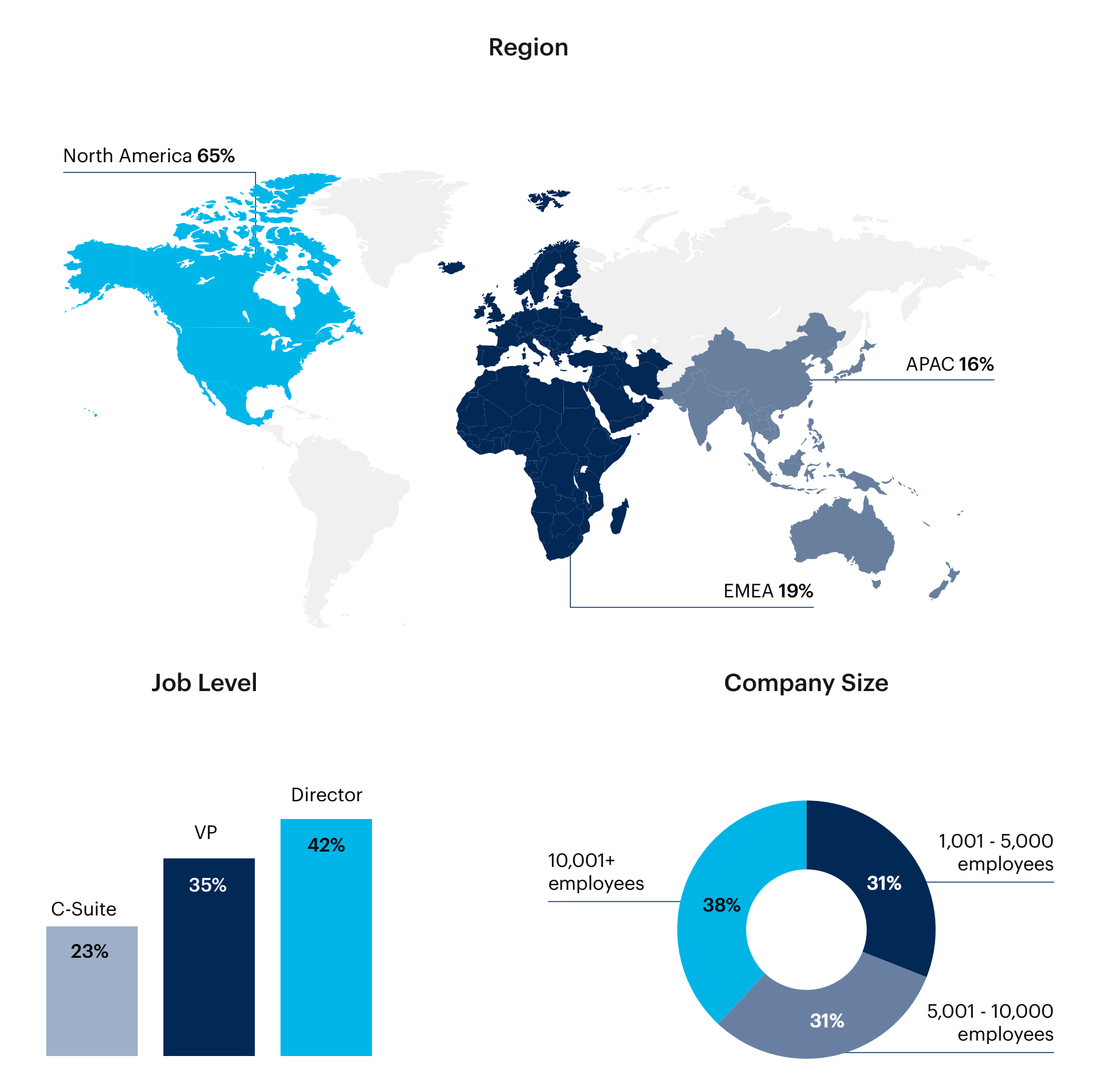Hyperautomation: Are You Automating Your Business?
Hyperautomation allows for streamlined processes and decision making, but how successfully are tech leaders deploying it in their organizations? Read on to find out.
One minute insights:
 Majority of those who are aware of hyperautomation say their organization is currently deploying the technology
Majority of those who are aware of hyperautomation say their organization is currently deploying the technology Robotic process automation (RPA) and artificial intelligence (AI) tools are the most commonly deployed by leaders
Robotic process automation (RPA) and artificial intelligence (AI) tools are the most commonly deployed by leaders Leaders expect hyperautomation to improve agility
Leaders expect hyperautomation to improve agility Lack of integrations presents a challenge to adoption
Lack of integrations presents a challenge to adoption Respondents believe hyperautomation will impact the finance industry in particular
Respondents believe hyperautomation will impact the finance industry in particular
Tech leaders understand how hyperautomation works, and many have either deployed it already or are in the process of doing so
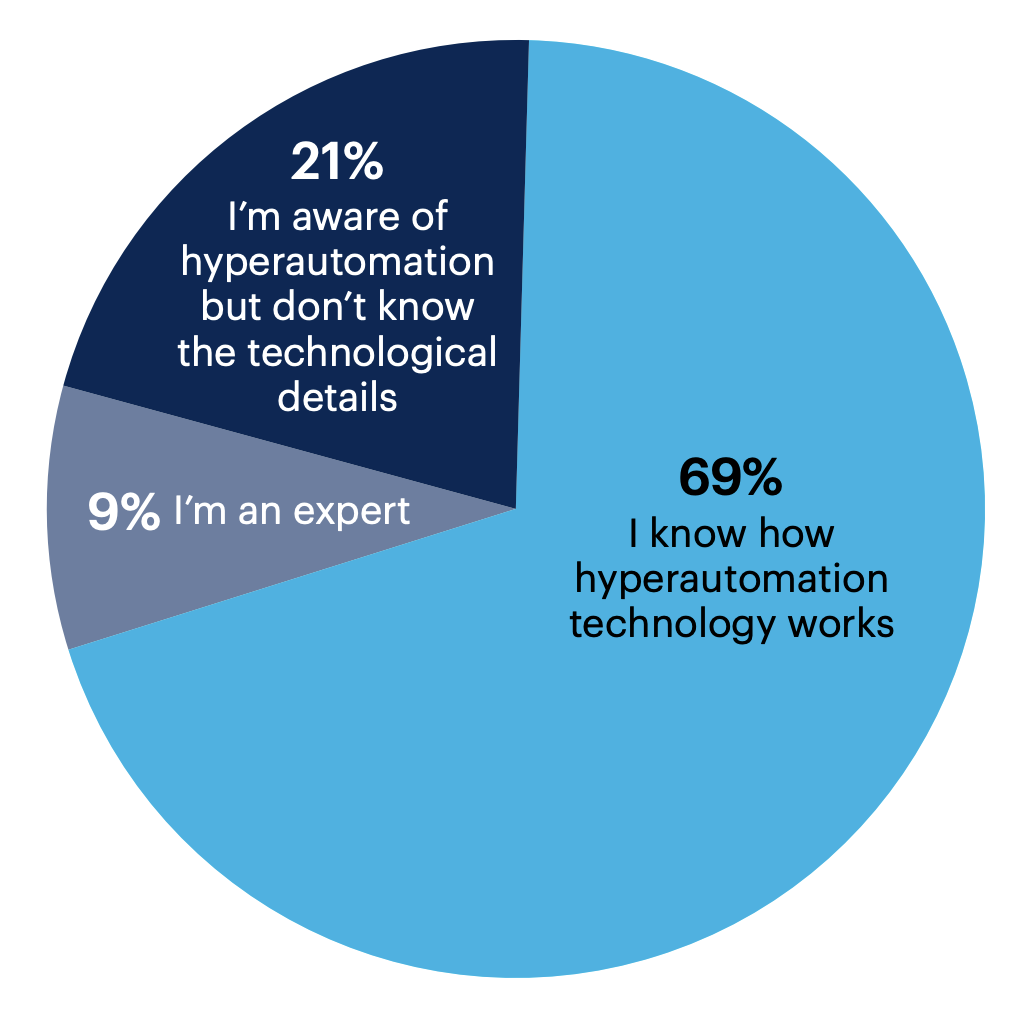
69% of respondents say they know how it works, but only 9% would classify themselves as experts.
How informed are you about hyperautomation technology?*
n = 300
Note: May not add up to 100% due to rounding
*Those who responded “I’ve never heard of hyperautomation” were eliminated from the survey
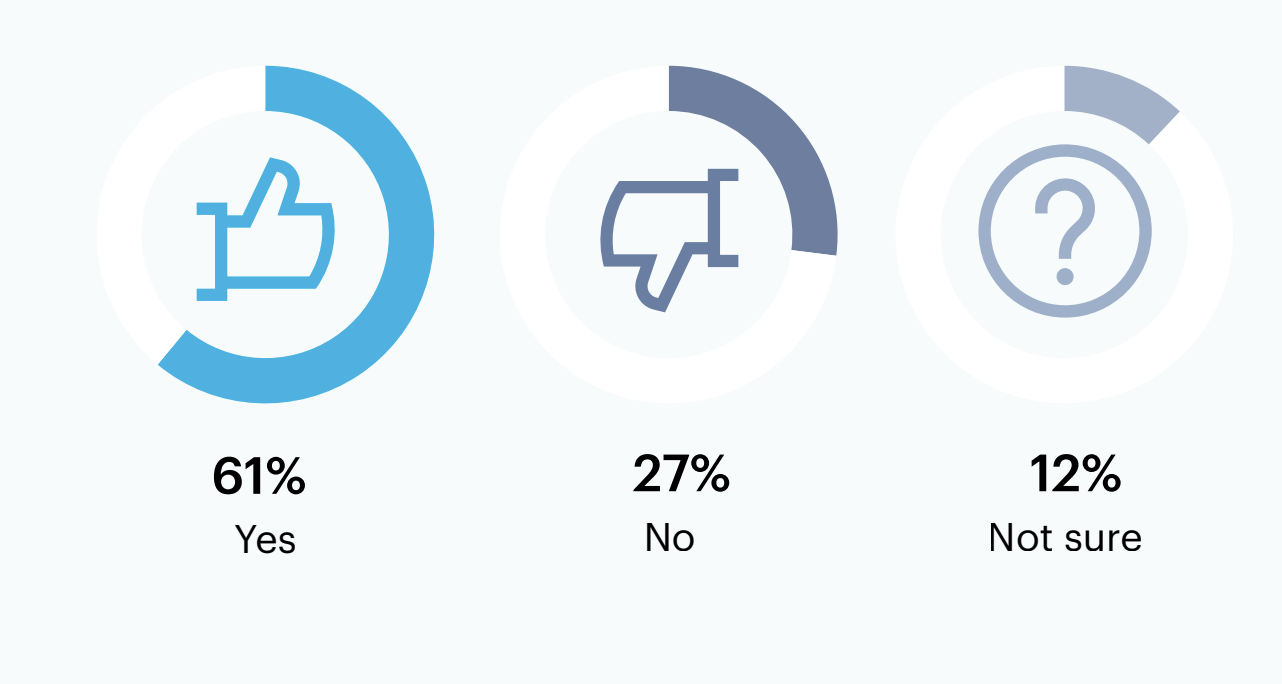
61% of respondents say their organization is currently deploying hyperautomation.
Is your organization currently deploying hyperautomation?
n = 300
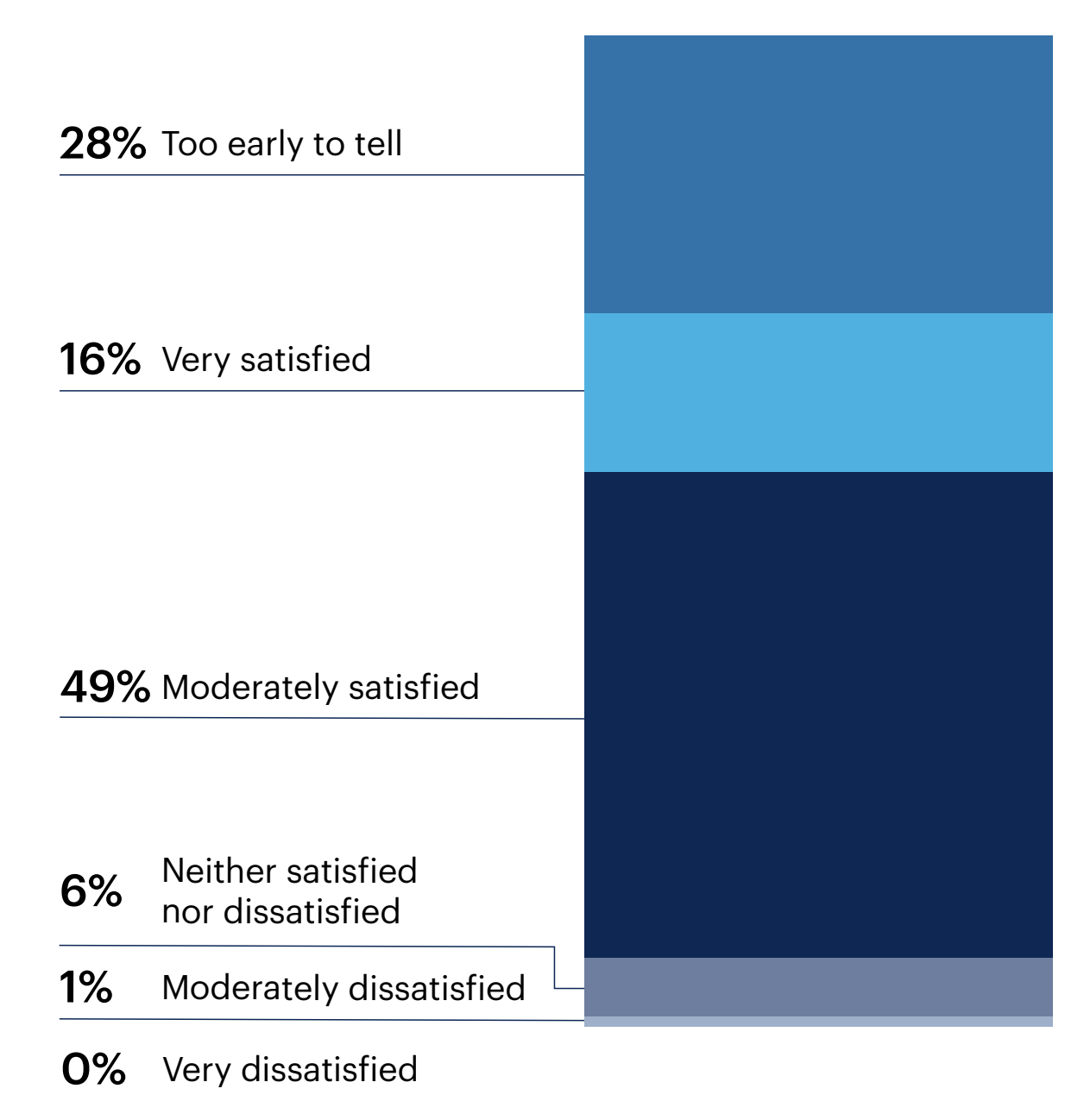
65% of leaders at organizations that are currently deploying hyperautomation (n = 183) are satisfied with their organization’s deployment of this technology.
Are you satisfied with your organization’s deployment of hyperautomation?
n = 183
Question shown only to those who answered “Yes” to the question “Is your organization currently deploying hyperautomation?”
More than half (57%) of respondents at organizations that are not currently deploying hyperautomation (n = 81) say their organization is planning to deploy this technology.
Is your organization planning to deploy hyperautomation?
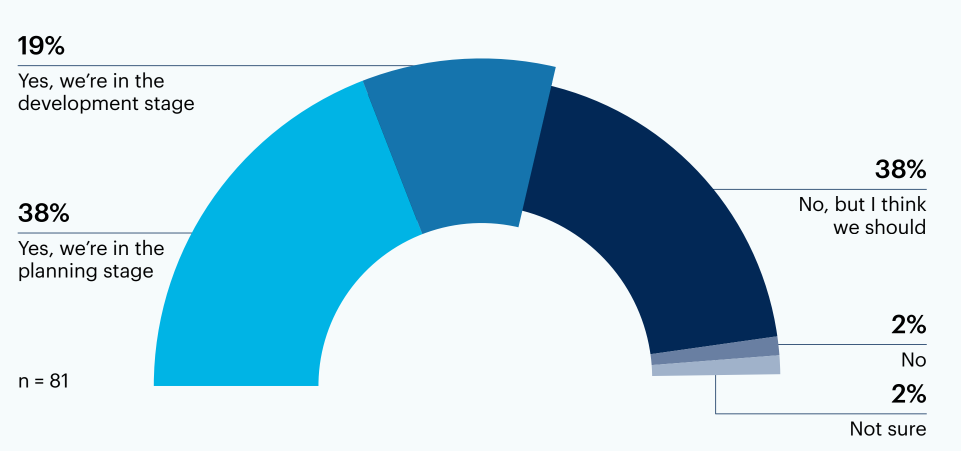
Note: May not add up to 100% due to rounding
Question shown only to respondents who answered “No” to the question “Is your organization currently deploying hyperautomation?”
Question: Do you have any final thoughts to share on hyperautomation technology?
Hyperautomation is changing the way we do business and the types of jobs currently in the market. We are going through a transformation period that will define a before and after in the industry.
Automation should be used for [the] right processes in [the] right place. Otherwise it can complicate the process instead of simplifying the area
At organizations deploying hyperautomation, most leaders have deployed RPA or AI tools
Most respondents at organizations that are currently deploying hyperautomation (n = 183) say they have deployed RPA (72%), AI (62%) or chatbot (58%) hyperautomation tools. Intelligent business process management (iBPM) suites (16%) and integration platform as a service (iPaaS) (10%) were the least common types of hyperautomation tools deployed.
What types of hyperautomation tools have you deployed?
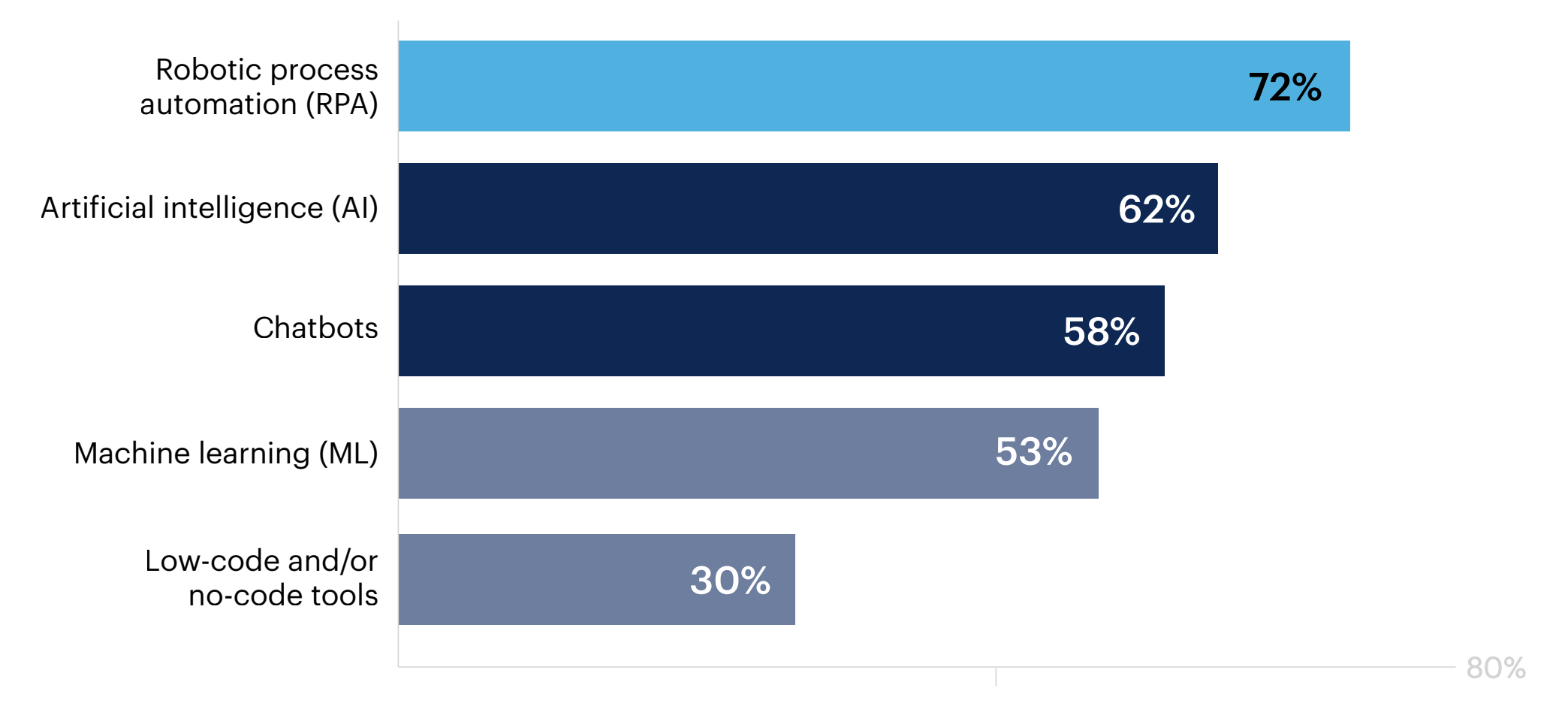
Process discovery and mining 23% | Business process management (BPM) suites 23% | Natural language processing (NLP) systems 22% | Event-driven software architecture 19% | Intelligent business process management (iBPM) suites 16% | Integration platform as a service (iPaaS) 10% | None of these 0% | Other 0%
n = 183
Question shown only to those who answered “Yes” to the question “Is your organization currently deploying hyperautomation?”
Question: Do you have any final thoughts to share on hyperautomation technology?
As we move forward with technologies, it will be imperative that we take much of the 'human' tasks out of the mix and much of the redundant tasks and move them to automation. This will be important for scalability, security and speed to deliver.
In some areas we have had a lot of success like BPA and BI/analytics. However the AI and chatbots have not succeeded as hoped. Maybe the failures need another 3-4 years [of] maturity.
Hyperautomation seen as a way to improve agility, but a lack of integrations presents a challenge

Among respondents whose organizations are deploying or planning to deploy hyperautomation technology (n = 229), improving agility (76%) was the most common reason their teams decided or planned to adopt hyperautomation.
What were the reasons your team decided to adopt or is planning to adopt hyperautomation?
Increase product growth 35% | Improve security 23% | Capture operational analytics 19% | Executive pressure 7% | None of these 0% | Other <1%
Question shown only to those who answered “Yes” to the question “Is your organization currently deploying hyperautomation?”; or who answered “Yes, we’re in the planning stage” or “Yes, we’re in the development stage" to the question “Is your organization planning to deploy hyperautomation?”
n = 229
66% of all respondents pointed to a lack of integrations as one of the three main barriers to hyperautomation adoption, and 64% identified skills gaps as a main barrier. Around a third included bugs (34%), high costs (32%) or security threats (31%) as prominent barriers.
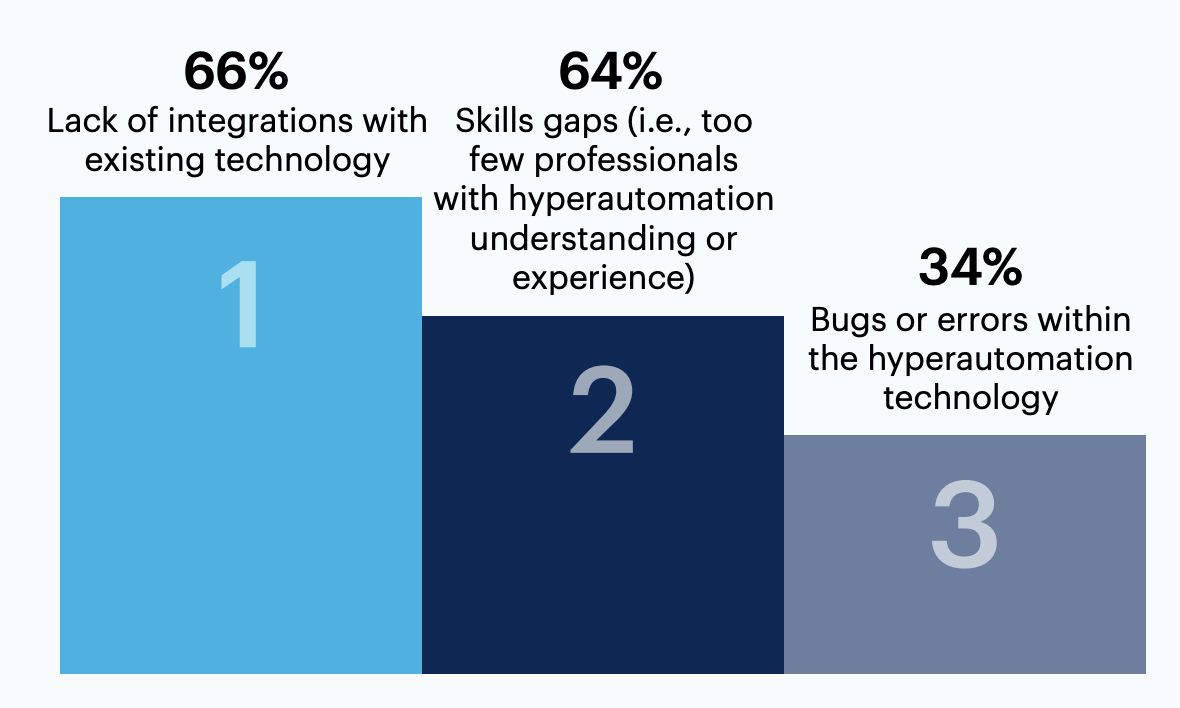
High implementation costs 32% | Unforeseen security threats 31% | Internal confusion about who owns hyperautomation 17% | High operating costs 14% | Lack of executive interest 12% | Lack of business use case 10% | Lack of interest or trust among staff 7% | Unforeseen regulatory/ governance challenges 7% | None of these 0% | Other 0%
n = 300
Question: Do you have any final thoughts to share on hyperautomation technology?
Internal alignment from all stakeholders is [a] must for hyperautomation to provide results.
Hyperautomation will surely have an impact on the business but the adoption of the technology will be a slow and steady process.
Respondents expect hyperautomation to impact business, particularly in the finance industry
71% say that hyperautomation will play a role in business, and 17% believe 71% it will become fundamental.
What level of impact do you think hyperautomation will have on business in the future?
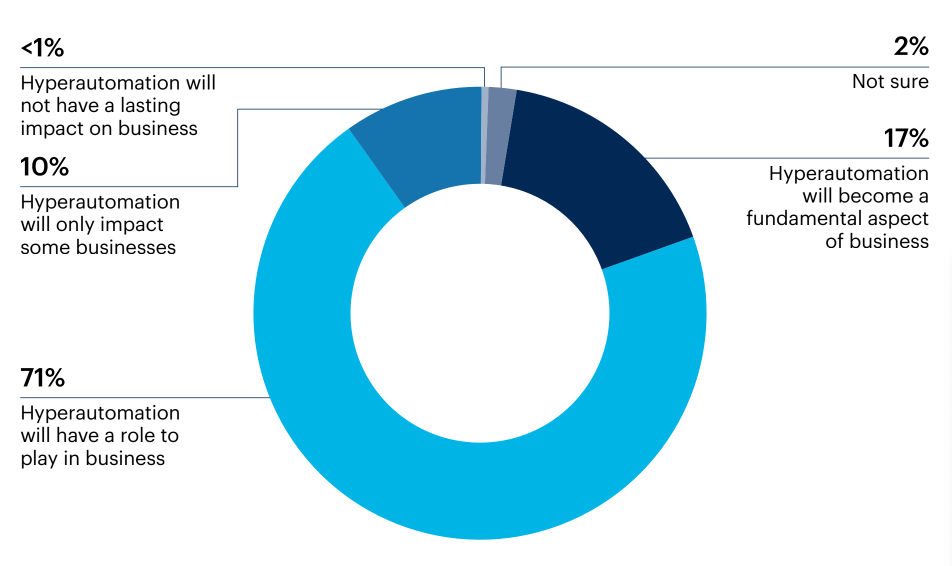
n = 300
Note: May not add up to 100% due to rounding
Almost three-quarters (73%) expect the finance, banking and insurance industry to be among the top three industries most impacted by hyperautomation.
Which industries will hyperautomation impact the most? Select up to three.
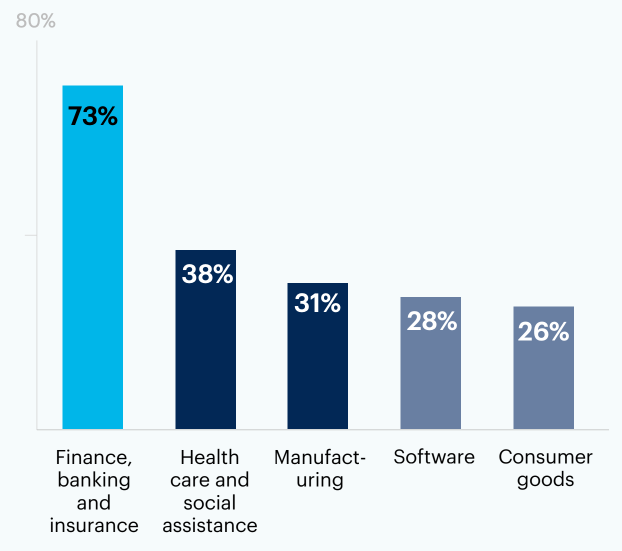
Transportation and warehousing 20% | Professional services 18% | Retail 18% | Telecommunication services 15% | Agriculture, forestry, fishing and hunting 14% | Arts, entertainment and recreation 14% | Government 14% | Educational services 11% | Utilities 7% | Real estate, rental and leasing 7% | Other <1% | None of these 0%
n = 300
Question: Do you have any final thoughts to share on hyperautomation technology?
Hyper-automation is just an expansion of the automation process using newer tools and techniques. As with all technical processes, it will continue to evolve and, hopefully, become a mature, cost effective solution.
Hyperautomation has a huge role to play in the future of business. There remains, however, a significant cultural barrier to adoption. Many organisations while talking about digital, still lack trust in automated capabilities. There is an even larger proportion that resists automation as they fear they may lose their jobs because of it. More likely, though, it is through fear that it may highlight poor performance and lack of clear processes and accountabilities.

Want more insights like this from leaders like yourself?
Click here to explore the revamped, retooled and reimagined Gartner Peer Community. You'll get access to synthesized insights and engaging discussions from a community of your peers.
Respondent breakdown
